
MNN, Dec. 1, 2024. One of the Kahnistensera Mohawk Mothers made the following remarks to McGill Law School students on Nov. 25, 2024:
 “Welcome to the land of my mother, onowarekeh turtle island, and welcome to my school, McGill University, which was paid for with our stolen Indian trust funds and never paid back to us. I am in the 85th year of my life, a knowledge keeper with a responsibility to set the record straight. Thank you for inviting me. And please don’t take what I am going to say personally.
“Welcome to the land of my mother, onowarekeh turtle island, and welcome to my school, McGill University, which was paid for with our stolen Indian trust funds and never paid back to us. I am in the 85th year of my life, a knowledge keeper with a responsibility to set the record straight. Thank you for inviting me. And please don’t take what I am going to say personally.
I’ll begin with what happened here in 2015. Almost 10 years ago a group of Palestinians and the Demilitarize McGill group came to Kahnawake with over 600 pages of Freedom of Information documents to show us how military research was being carried out at McGill on behalf of weapons monopolies. This included drone warfare, missile guidance, domestic surveillance, explosives and air combat. They told us about the strife in Palestine and the role McGill was apparently playing in it.
On the following Saturday I decided to seize McGill University according to my responsibility as a progenitor of the soil of turtle island and my duties to the great peace. I served my seizure notice by Registered Mail on September 12, 2015. Here is the seizure notice. I was ignored. But it did not mean that I was wrong. https://mohawknationnews.com/blog/2015/09/12/mohawk-seizure-notice-to-mcgill/ McGill is on kahnienkehaka land and they are violating the kaianerekowa by assisting in making weapons to kill people and I ordered them to stop and also to meet so we could talk about it. No answer. Several law students told me that they received a copy of my seizure notice and had to write an essay on it. In the end the professors said if this notice went to court, I would win. The students were told that it would be set aside and not spoken of again. Almost immediately plans were announced that there would be a huge renovation of McGill University, to dig up the grounds and put new buildings on it.
A few years later another Kahnistensera Mohawk Mother and I decided to write to the boss of McGill of tekanontak [Mount Royal] and ask again to meet with us to discuss our concerns. Still ignored. Then we decided to take a court action to inform them that we were serious. This is now going into its third year and has now been filed in the Supreme Court of Canada, SCC File No. 41502. We Kahnistensera Mohawk Mothers have no funds and no lawyers. We are conducting our own case by our traditional concensual decision making process of the kaianerekowa, the great peace.

Great White Pine
The Tree of Peace
Then recently another group of students decided to plant the Great White Pine behind the Roddick Gates of McGill. This tree is our symbol of world peace. Before the tree planting ceremony the knowledge keeper from Kahnawake walked over to McGill security and asked them, “Where are you from? Why did you come here to our land.” They told him of the hardship and strife they and their ancestors had suffered in their foreign homeland. Then the knowledge keeper asked, “So having left all that, why did you come here and mistreat us on our land?” They did not answer. Later while the tree planting ceremony took place the security stood by and quietly watched the procedure. The same night the tree was uprooted by McGill Administration. The next morning they called the Student Union to “come get your tree”. It was taken to Kanehsatake. No decision has been made yet as to the next course of action.
Everyone needs to understand that our court case is meant to present a peaceful solution, not to get into a fight with our opponents. Our actions are based on our natural will to survive and love for our land, Kanenronkwatsera.
 Sections 35 and 52 of the Canadian constitution of 1982 are Canada’s words that support the existence of kaianerekowa, the great peace and the two row agreement, which have been here since time immemorial and will remain until infinity. We are part of creation. Our ancient ways on turtle island do not need your affirmation. Creation affirmed our existence because that is who we are. You are bound to your imported man-made laws that have no bearing on us or turtle island. You seem to chose your laws and change them at will. Our way provides that since you have intruded on our land without our invitation you too must live by the great peace. Instead you shut down our voices. No one owns our mother. We are her caretakers. The intruders system is based on 51% winners and 49% losers, or various parties attacking each other, otherwise known as a failed democracy where 49% have no voice.
Sections 35 and 52 of the Canadian constitution of 1982 are Canada’s words that support the existence of kaianerekowa, the great peace and the two row agreement, which have been here since time immemorial and will remain until infinity. We are part of creation. Our ancient ways on turtle island do not need your affirmation. Creation affirmed our existence because that is who we are. You are bound to your imported man-made laws that have no bearing on us or turtle island. You seem to chose your laws and change them at will. Our way provides that since you have intruded on our land without our invitation you too must live by the great peace. Instead you shut down our voices. No one owns our mother. We are her caretakers. The intruders system is based on 51% winners and 49% losers, or various parties attacking each other, otherwise known as a failed democracy where 49% have no voice.
We would never abuse or let anyone take us away from our duties and responsibilities to care for our mother earth and then let their foreign military take us to live in death camps called “reserves” where we have no rights or freedom. We are part of the natural gift of creation. The intruders show us every day they cannot take care of our mother. They rape, pillage and destroy her constantly.
Your laws are made to put fear into you backed by threats of punishment or death. We all know about the goodness of the great law of peace. We see that you don’t want to abide by our ways. Even some of our own people have been mislead into following the wrong path.
One of the problems is that you don’t know the truth about us, then you make up misinformation to hide your crimes. Then you refuse to reveal the truth. You are living on generations of disinformation. We can tell what we know and what we see. It seems you let a few control which you allow to continue. When you realized that our way of living is for peace, your goal became to destroy those who got in your way and tried to stop the continuing systemic theft, enslavement, annihilation, genocide, ecocide, ethnocide and crimes against humanity by church and state for your benefit.
The invaders are squatting on our land that they can never own. You have set up a process to completely annihilate or assimilate us. We have no say in this. No, don’t mention your band councils who work for you to carry out your deeds. Everybody knows right from wrong. You study, write your exams, pledge allegiance to a foreigner and his family and then get a job in the corporate system to carry out the corporate agenda.

Backed by the military.
Why are so many terrified of the truth? When you arrived on turtle island, you agreed to live our way, just as you would when you go to any other country in the world. We welcomed you. You knew that our way could not destroy or subjugate you if you followed our kaianerekowa, great peace. Then you changed. The time has come for you to learn and accept the truth about your violations of the great peace.
You were to live here according to the great peace and the two row, you on your ship and us on our land. You stopped us from being stewards of our land. You are supposed to care for the land just like us. The “Indian lands act” of Oct. 1924, called the “100 year business plan”, was enacted to remove us totally from our mother. You did not want to live side by side with us in peace. You wanted it all and had to annihilate us. You used foreign laws to pass your laws to kill us and to carry out the theft without punishment. These are still the laws of the invaders.
You acknowledge that McGill University is on unceded kahnienkehka land. You now have to undo the wrongs you have done. Truth and reconciliation do not mean anything when you ignore our agreements. Only when you accept the whole truth can you start to create the balance.
The truth of the harm you have done to us goes very far back. How and why did your people place yourselves here? “Manifest destiny” and “terra nullius” are meant for you invaders to take everything and get everything for nothing. You were told the land was stolen and that you could come here and get rich.
 We are still trying to reconcile with the genociders and the benefitters. Section 35 of the constitution affirms our presence since time immemorial to care for our mother and that our ways are the laws of turtle island. Those who don’t follow the kaianerekowa, the great peace, do not belong here. We are not an historical footnote to be forgotten. Canadians are from Europe which we do not want to be. You are not sovereign here. Turtle island is not your original land from the beginning of time. Your languages, religions, and cultures are foreign to this land and aren not welcome here.
We are still trying to reconcile with the genociders and the benefitters. Section 35 of the constitution affirms our presence since time immemorial to care for our mother and that our ways are the laws of turtle island. Those who don’t follow the kaianerekowa, the great peace, do not belong here. We are not an historical footnote to be forgotten. Canadians are from Europe which we do not want to be. You are not sovereign here. Turtle island is not your original land from the beginning of time. Your languages, religions, and cultures are foreign to this land and aren not welcome here.
As we part I thought I’d let you know that I went to your law school a long time ago. I lasted one semester because to me the false retributive justice system was all horse —-. Nia wen for listening to me”.
The Rolling Stones can’t get no satisfaction but maybe the Mohawk Mothers might get some in the Supreme Court of Canada:
BACKGROUND:
mohawknationnews.com
kahentinetha2@protonmail.com
#991 kahnawake quebec canada J0L 1B0ac
MohawkMothers.











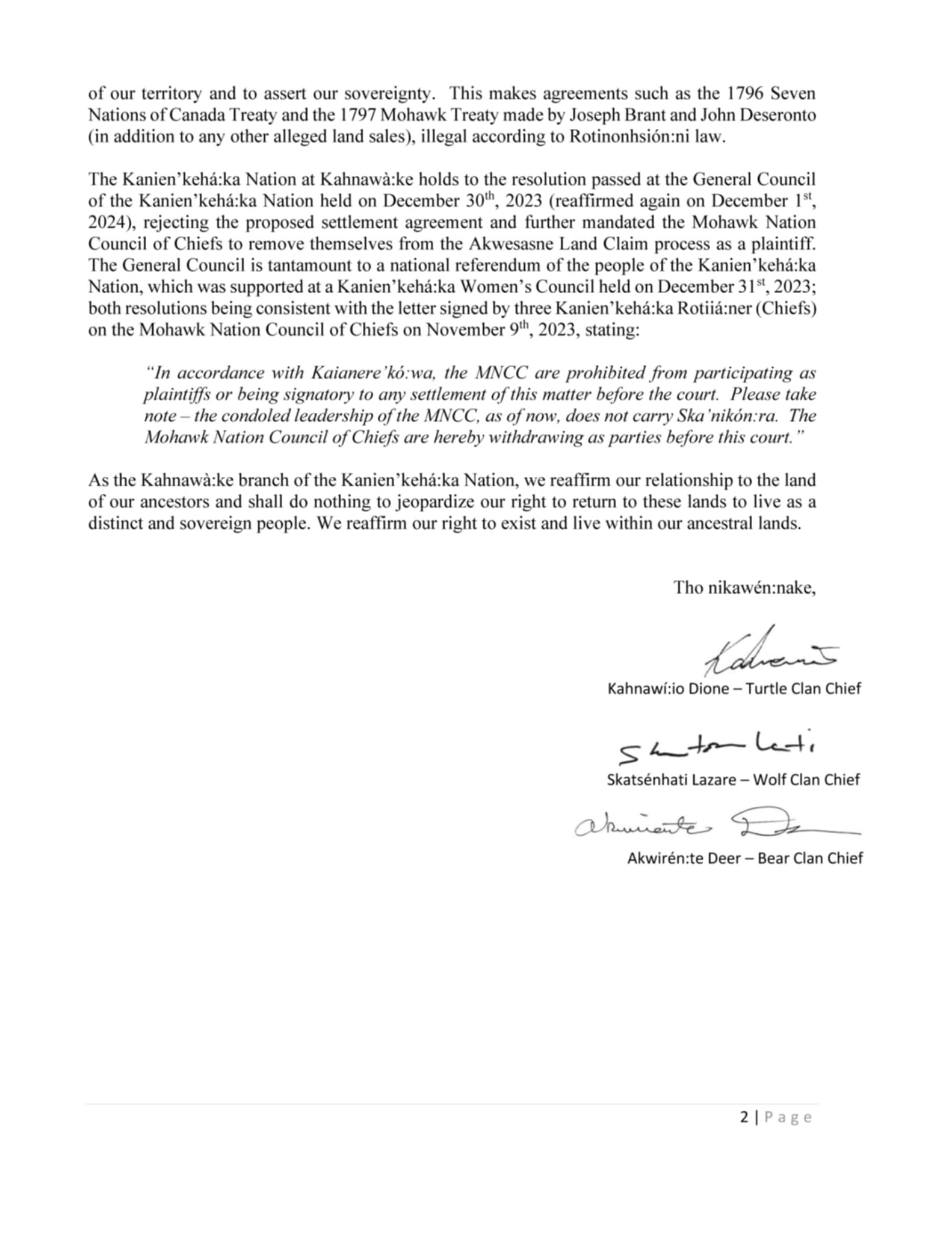
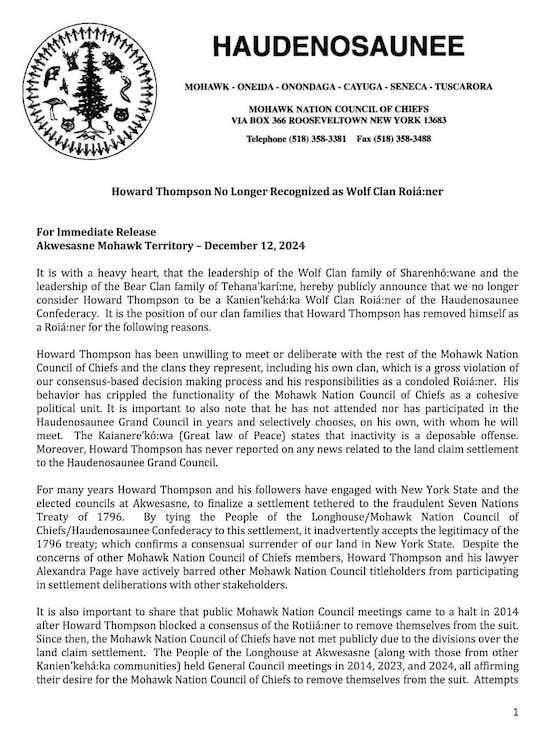
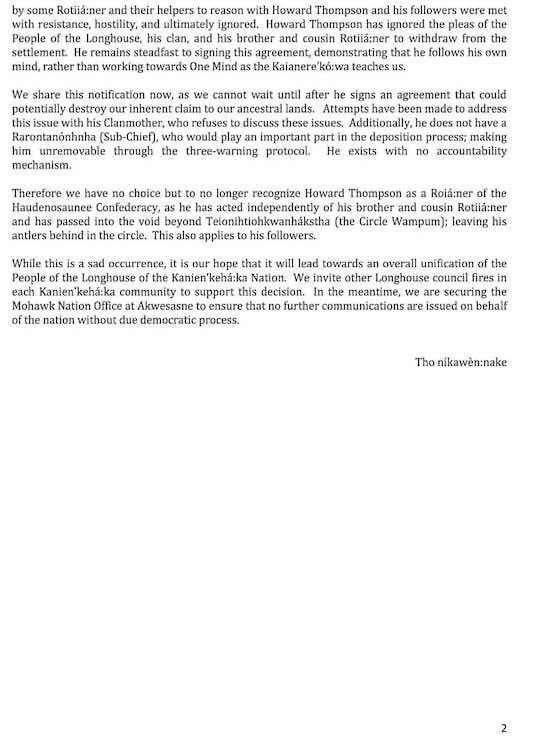
















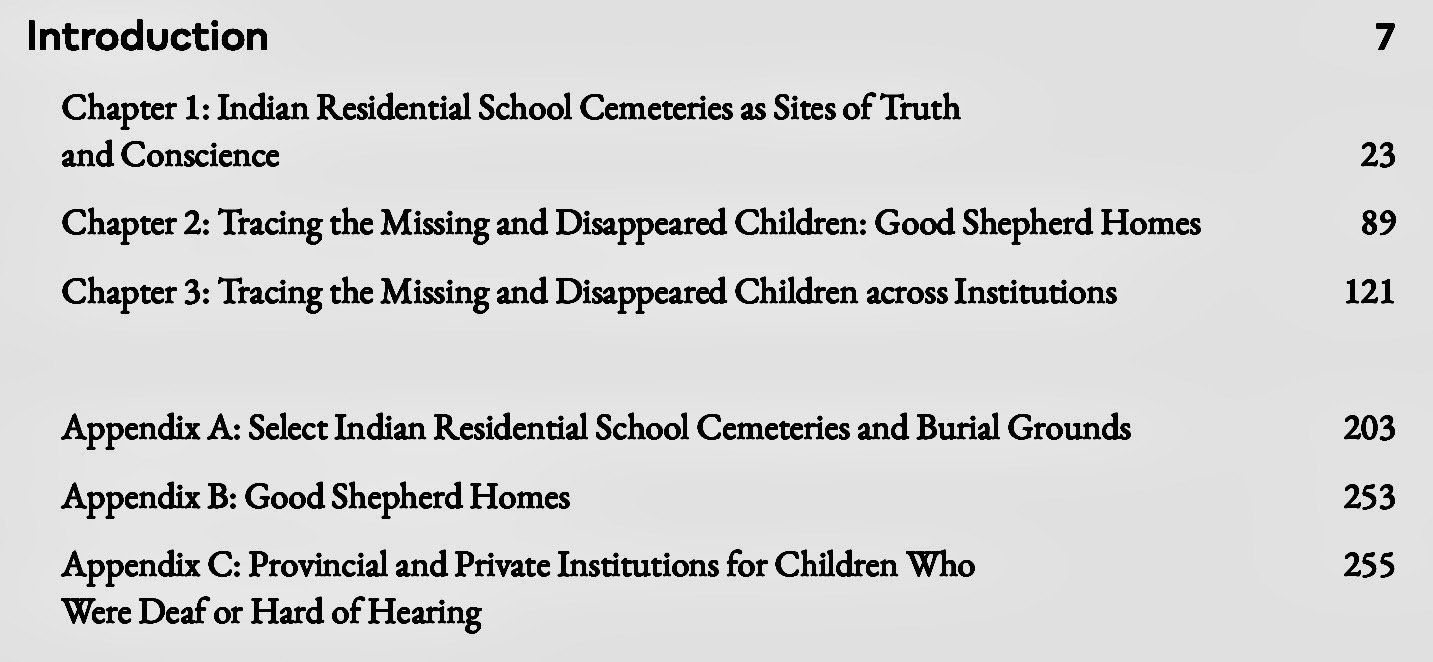

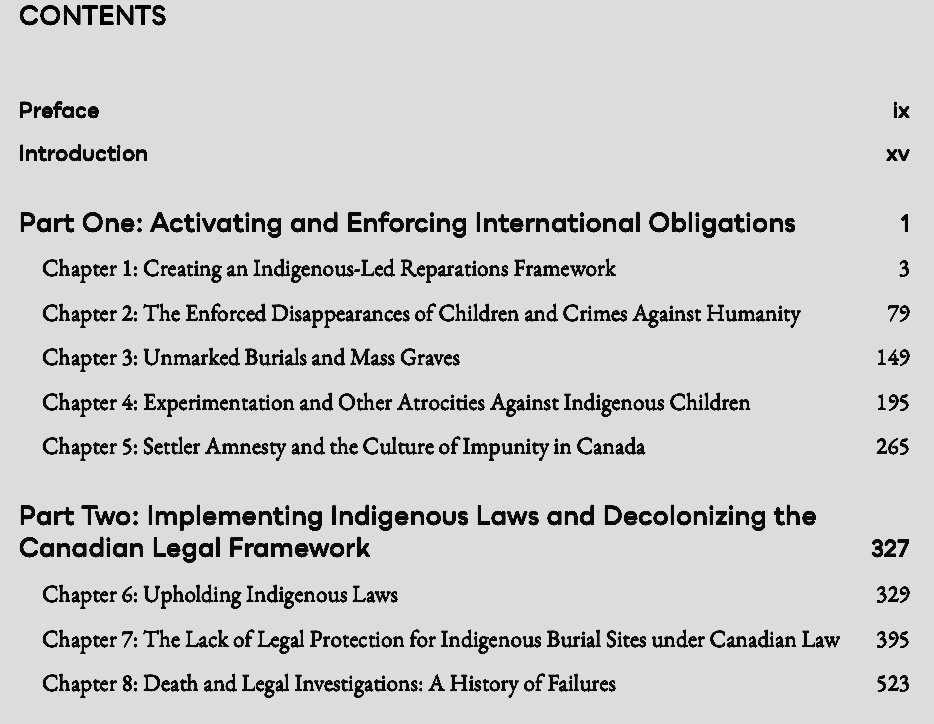 ______________________________________________________________________
______________________________________________________________________
 ______________________________________________________________________
______________________________________________________________________
 ______________________________________________________________________FRENCH VERSION
______________________________________________________________________FRENCH VERSION






